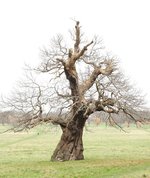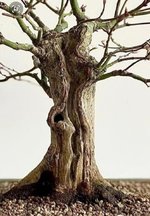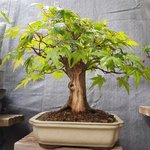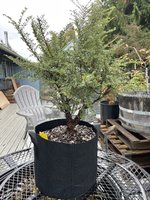SandSquid
Yamadori
Hello all -
I've searched both this forum and elsewhere online and can't seem to find a clear answer, so I'm hoping by posting the question myself that you wise folks will jump in.
I have a Seiju elm I picked up a couple months ago as a pre-bonsai from a nursery that has a "bonsai" department. They have some pretty cool stuff, and I found a particular Seiju I liked. I'll post a couple pics as soon as I get home. But, really, I'm not sure pics are necessary (at least at this point).
The first question is, when is a good time to do a significant pruning on a Seiju? I'm not talking chopping the trunk; I'm talking about pruning branches back to 1-2 leaf pairs while removing unwanted branches altogether. I really need to shrink the overall stature of the tree, it's wildly out of control and I need to bring it into something resembling the obligatory conical shape while also tightening things up. I read articles that say late winter, late fall, late spring... but really they're mostly talking about regular Chinese elms, not the Seiju.
The second question is, would it be outlandish to create shari as a way of helping to remove reverse taper in some areas? It's not that bad, but it's bad enough.
Lastly, the tree has three very thick roots that may look cool at first glance, but don't really do anything to enhance the nebari. They make it look kind of like a badly drawn chicken foot (for lack of better imagery). I read on another thread here that removing those roots at the trunk will encourage new, smaller roots to form, replacing the ultra-thick single root that is there. I may have some of the details wrong, but is there anything to that? I thought I read that doing it after the leaves have fallen is the best time as the tree is able to focus on root growth instead of sending its energy upward. I could be way off base.
Thanks again!
I've searched both this forum and elsewhere online and can't seem to find a clear answer, so I'm hoping by posting the question myself that you wise folks will jump in.
I have a Seiju elm I picked up a couple months ago as a pre-bonsai from a nursery that has a "bonsai" department. They have some pretty cool stuff, and I found a particular Seiju I liked. I'll post a couple pics as soon as I get home. But, really, I'm not sure pics are necessary (at least at this point).
The first question is, when is a good time to do a significant pruning on a Seiju? I'm not talking chopping the trunk; I'm talking about pruning branches back to 1-2 leaf pairs while removing unwanted branches altogether. I really need to shrink the overall stature of the tree, it's wildly out of control and I need to bring it into something resembling the obligatory conical shape while also tightening things up. I read articles that say late winter, late fall, late spring... but really they're mostly talking about regular Chinese elms, not the Seiju.
The second question is, would it be outlandish to create shari as a way of helping to remove reverse taper in some areas? It's not that bad, but it's bad enough.
Lastly, the tree has three very thick roots that may look cool at first glance, but don't really do anything to enhance the nebari. They make it look kind of like a badly drawn chicken foot (for lack of better imagery). I read on another thread here that removing those roots at the trunk will encourage new, smaller roots to form, replacing the ultra-thick single root that is there. I may have some of the details wrong, but is there anything to that? I thought I read that doing it after the leaves have fallen is the best time as the tree is able to focus on root growth instead of sending its energy upward. I could be way off base.
Thanks again!










